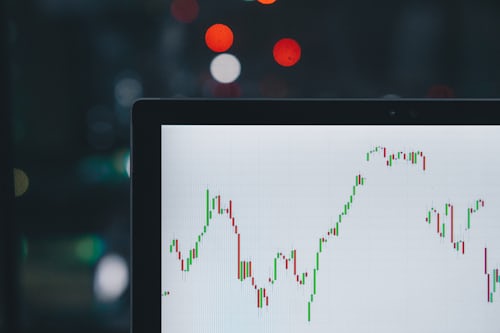Blue chips are shares of large companies with high turnover on whose price performance leading indices are based. Blue chips are characterised by a high trading volume and greater exposure to institutional investors.
Price fluctuations are usually smaller - especially betwen successive prices in the daily stock market cycle. Blue chips in the German share index DAX are, for example, Daimler, Deutsche Bank, BMW or Siemens.
Companies below the DAX
Mid caps are shares or companies with a lower trading volume than market-leading stocks, the so-called blue chips. In Germany, 50 mid cap companies are listed in the M-DAX index.
Small caps are second-line stocks listed on the stock exchange in various indices. Small caps are shares or companies that have a low stock market value or low turnover. Investors who put their money into small caps usually look for higher profit opportunities, but also accept higher risks.
The smaller the share, the smaller the trading volume
Many market participants assume that trading in small caps, in contrast to trading in blue chips, is made more difficult because the liquidity (meaning the average trading volume) is smaller. One of the unpleasant effects of this circumstance is that the willingness to sell shares quickly in weak stock market phases is greater in small caps.
Importance of weaker liquidity
The price of a share is created by the ideas about the prices of buyers and sellers. Supply and demand are in sufficient supply in a perfect marketplace. All orders for securities are executed immediately without the individual order changing the price of the share in one direction or the other.
Reality and practice
However, in reality the markets do not obey this theoretical ideal. In practice, the reduced availability costs the investor cash in two ways. On the one hand, an offer to buy or sell changes the price on an illiquid market to the investor's disadvantage.
On the other hand, the order is not executed immediately on an illiquid marketplace. If an investor with payment methods wants to sell a share for which there is no counteroffer, he can wait until a buyer is found. But, the longer the wish to sell is on the order book, the higher the risk that the share price will fall.
Identifying illiquid shares
Investors can recognise the liquidity of a share by the quote, the corresponding volume and the spread between bid and ask. Other important clues are provided by trading data such as traded volumes and the amount of price fixing. However, it should be noted that past trading activity does not necessarily reflect availability in the future.

